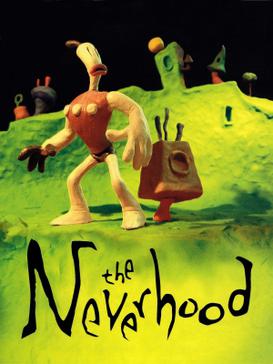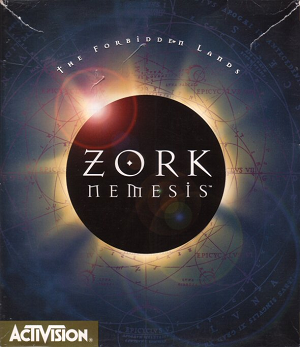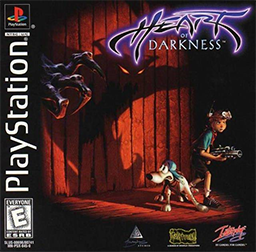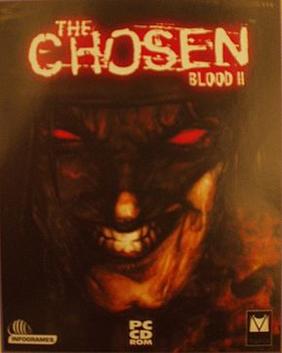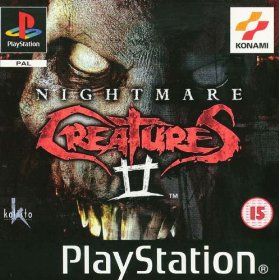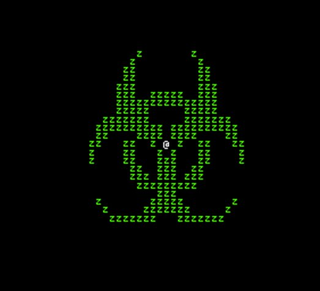Plot
The game begins with Arkhan awakening from a nightmare in which he has a vision of the Great Cataclysm and sees it foretold that a great darkness will threaten Sparta, which he must fight against. He then goes to see the head of the Guardians of Fire, Provost Dhorkan, who orders him to guard the council chamber door at the Temple of Solaar, while the High Sunseer Lory is holding a meeting. On his way to the Temple, Arkhan overhears his father Rylsadhar, also a Sunseer, telling Lory that he fears a great danger is about to engulf Sparta. He gives Lory something, telling her he doesn't feel safe carrying it himself. Arkhan takes his post, but hears a commotion from within the council room. He bursts in to find the Sunseers under attack by two men, one of whom he kills. The other is about to attack Lory, but Arkhan intervenes, and the man throws something in his face and flees. Lory examines Arkhan and sees that he has been contaminated by "Shankr Archessence."
Arkhan awakens some time later, and is horrified to discover that he has begun to turn into a creature of darkness. A healer, Thanandar, tells him that he is infected with darkness and the only way to save him is a "secret energy from the dawn of time." Thanandar says that Rylsadhar is one of the few people in Sparta who knows where it is located. Arkhan goes to see Rylsadhar, who tells him he is forbidden to bring him to the secret and must break his vows as a Sunseer to do so, but only after getting approval from Dhorkan. Arkhan then sees Kalhi, his wife, who is horrified at what has happened to him and tells him that Dhorkan has taken control of the city, declared martial law, locked the gates, and sent the Guardians of Fire out to search for more attackers.
Arkhan heads to meet his father, but Rylsadhar doesn't arrive, so Arkhan sets out to look for him. He learns that Lory has gone into hiding and that his best friend, and fellow Guardian, Zed, is leading the hunt for more "heretics" in the Lower City. Arkhan then learns that Rylsadhar has disappeared, and the Guardians of Fire have arrested Kalhi. He breaks her out of jail and they head to the Lower City to see their friend, the scavenger Danrys, who tells them that they need to speak to a man named Armal Sadak, the chief scavenger. Sadak tells Arkham that the people who attacked the Sunseers are a group of thugs known as the Konkalites who live in the sewers. However, they did so on the orders of someone else, although Sadak doesn't know who. He also recommends that Arkhan find Leona, a hermit who lives outside Sparta in the Dark Earth.
Whilst Kalhi remains with Danrys, Arkhan heads into the sewers and discovers that the Konkalites' leader, Sordos, is planning to take over the Upper City. Arkhan also learns that Sordos and Dhorkan are working together. However, Dhorkan is not the one behind the attack on the Sunseers. Sordos is in league with another Sunseer, who is behind everything. Arkhan then finds Sordos in conversation with Thanandar, who reveals he is holding Rylsadhar prisoner. Arkhan kills them both and enters the cells, finding Zed. Zed tells Arkhan that Thanandar is behind everything and seeks to find the ancient secret to destroy it and banish the light from Sparta forever. Zed then turns into a creature of darkness, and Arkhan is forced to kill him.
Arkhan returns to the Upper City to confront Dhorkan, but he flees through a secret passage in his office. Arkhan pursues him down to the Lower City, where he encounters the resurrected Thanandar. He reveals that Rylsadhar drank the Archessence that fills Thanandar's soul, and now Rylsadhar has become Thanandar's servant. Thanandar sends Rylsadhar to destroy the Well of Light at the heart of the city. Rylsadhar does so, but dies in the process. Arkhan then meets Lory, who tells him that with the destruction of the Well of Light, the walls of the city no longer protect it from the creatures of darkness. She also tells him that the city has only one chance for salvation; Rylsadhar spent many years researching the origins of the light in the Well of Light. If Arkhan can continue Rylsadhar's research, he may find a way to save the city; beneath the city is a source of unlimited light, but it is dormant and needs to be activated - this is what Rylsadhar was researching. Lory gives Arkhan part of the key to Rylsadhar's vault (the item Rylsadhar gave to Lory earlier on) and urges him to find a way to access the light energy.
Arkhan then sets about finding the rest of the key. He finds the first part with the city's Master Builder, Bandor, who tells him the other parts of the key are with Zed, and Leona. Arkhan finds and defeats Dhorkan, and then discovers a secret bunker from the time of the Great Cataclysm, containing hibernation pods and video files detailing how people tried to survive in the bunker after the meteor collision. He then meets a thief who is holding Zed's part of the key. Arkhan kills him and takes the key. As he moves around the city, Arkhan notes that everywhere, people are beginning to turn into creatures of darkness. He heads down into the sewers and finds Dhorkan dying in the Konkalite's prison. Dhorkan regrets his actions, realizing that he had been used by Sordos and Thanandar. He advises Arkhan not to face Thananadar, and that the poison thrown in Arkhan's face was actually Thanandar's blood. He dies, and Arkhan then discovers a secret underwater passage to outside of the city.
He soon encounters Leona. Telling her that the Well of Light has been destroyed, that Rylsadhar is dead and that Thanandar is no longer human, Leona is shocked to hear of what has happened. She reveals that the secret of the Well of Light was known only to a few, known as Initiates, and that knowledge of it goes back to the dawn of time, millennia before the Great Cataclysm. The Well contains the Force of Light, and Rylsadhar was trying to find its source in a tomb deep below the city. Leona reveals that if the source can be found, the Force of Light will destroy the Force of Darkness in Thanandar, who, like Lory, Rylsadhar, Zed and Leona was an Initiate. She then gives him the final part of the key to Rylsadhar's vault. Arkhan heads back to the city, finding dead Guardians everywhere. A dying Guardian reveals that the creatures of darkness have entered Sparta.
Arkhan enters Rylsadhar's vault and finds research on how to gain access to the Runka Tomb, the source of the Well of Light. Rylsadhar had discovered how to enter the tomb, but had been unable to find the door. However, using an explosive substance found in the bunker, Akhan is able to find the door, which was hidden in the center of the city. Now almost completely transformed into a creature of darkness, he enters the tomb. Navigating a series of traps, he reaches the center of the tomb, but realizes he has been followed by Thanandar, now transformed into a monster of darkness. Thanandar attempts to destroy the source of Light, but Arkhan blocks him. They fight, and Arkhan is able to defeat and destroy Thanandar. Arkhan then enters the source, which tells him it is time for the "Great Awakening" as a tower of light shoots into the sky high above the city, banishing the Darkness.


